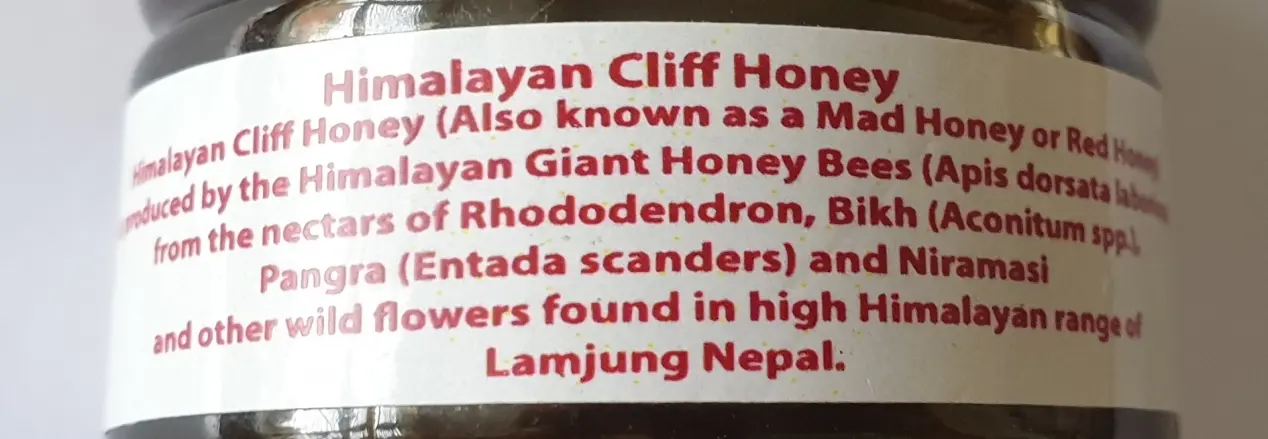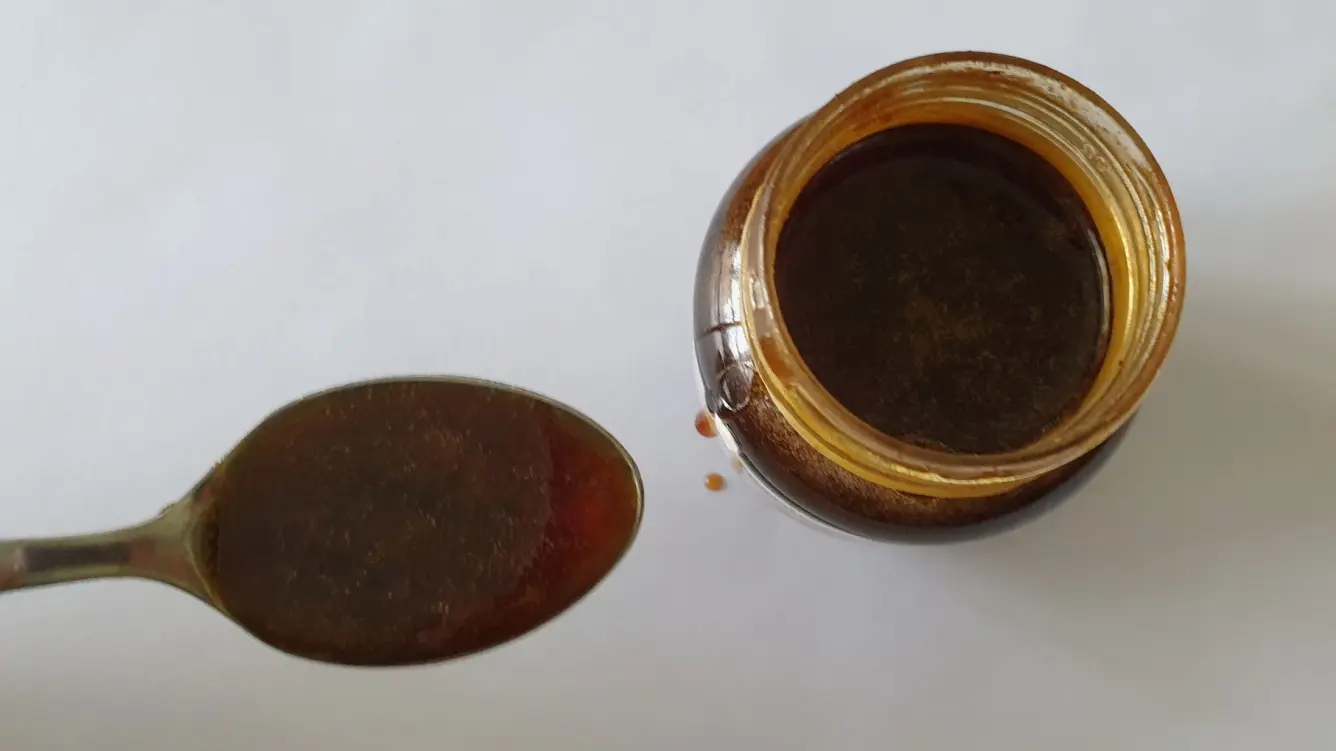Mad Honey #
| Binomial / Botanical Name | Mad Honey; Himalayan Cliff Honey |
| Street Names | Mad Honey; Crazy Honey; Red Honey |
| Major Active Compound | Grayanotoxin |
| Indigenous Source | Nepal; Turkey |
| Form | Honey |
| RoA | Oral |
| Personal Rating On Shulgin Scale | ++ |

SUBJECTIVE EXPERIENCE #
Some years ago I watched a YouTube documentary titled “Hallucinogen Honey Hunters - Hunting Mad Honey”. This presented an adventure in the mountains of Nepal to retrieve honey produced by giant bees, which contains a substance called grayanotoxin (from rhododendron flowers). This reputedly carries medicinal, aphrodisiacal and hallucinogenic properties.
The documentary was compelling, and it was clear that this stuff packed a punch, not least because the translator (Deepak) ate too much, had convulsions, vomited, and lost consciousness. He had to be carried back down, and looked in a really bad way. Fortunately he survived, but the warning this presented was clear enough.
Unfortunately, I was unaware of mad honey when I visited Nepal, where I sampled only the exquisite hash sold in Kathmandu. I therefore had to track some down and import to the UK a few years later.
This was quite expensive, and largely a shot in the dark regarding its authenticity, but certainly, the small 115 gram jar looked promising, referring to both the giant bees and rhododendron on its label:

Having acquired the honey, the tricky question of dose now arises. The vendor, who does seem to be genuine, and claims to have collected it himself from the same region the documentary was filmed in, suggests “one to two spoon”. This probably means teaspoon, as thedrugclassroom.com states that:
“For traditional medical reasons, around 1 teaspoon is a fairly common dose. More than 1 tablespoon is associated with more overt symptoms, including recreational ones. Yet even 1 tablespoon has the potential to be dangerous.”
This website also contains a significant number of alarming medical case studies, and also explains that the recreational effect is generally intoxication rather than hallucination.
For obvious reasons I elect to tread carefully, going for two teaspoons on my first experiment (1.20pm). The honey is dark and runny as I stir it, but it tastes rather nice. Note that I’ve seen reports citing onset time from half an hour to four hours, so I will not allow impatience to seduce me into double dosing.
An hour in I feel a little heady; perhaps slightly dazed. This could be a bit of a sugar rush or simply light headedness due to my empty stomach, or it could be a minor inebriation. It is impossible to call at this stage, but there has certainly been a change in my disposition.
After two hours, although I remain more or less in the same place, I am now convinced that this is psychoactive. I am in half a pint to a pint of beer territory, which is a fair analogy; given that the intoxication has an alcohol type of feel to it. I experience a sort of head sedation but without a euphoric warmth, and with a relative clarity of vision when I choose to focus. Broadly speaking I drift into states of not being quite with it, accompanied by a faintly strange headspace.

I note that my blood pressure and heart rate are both slightly lower than usual. I also sense some discomfort and potential for palpitations, which is why I performed the tests. This thought tempers the entire ride.
Over the next few hours I gradually return to what passes for normal, although there does remain a sort of background presence. In the evening I experience a mild headache, which could be unconnected, but may not be, particularly given that the subsequent night’s sleep was somewhat disturbed and I felt a general malaise and something of a body ache.
I should stress that all these symptoms were indeed mild, but if linked, do suggest that higher doses could quickly lead to something more serious. Of concern is also that the concentration of grayanotoxins is known to vary from batch to batch, meaning that I could well have a particularly strong sample.
I had planned to repeat the exercise with a higher dose some weeks later, but given this scenario, and that the intoxication wasn’t particularly wonderful in nature, I have decided to skip this. The idea that I have essentially poisoned myself has occurred and it is hard to shake off. I could be misrepresenting it somewhat, but it did have the feel of a deliriant, the edge of illness and a touch of weirdness about it.
Finally, I will end with another quote from thedrugclassroom.com:
“Most of the concerning effects involve the cardiovascular system. It very often results in significantly low heart rate (bradycardia) and low blood pressure (hypotension.) With the conduction disorders arising from the toxins, it can lead to 1st to 3rd-degree heart block, asystole, and myocardial infarction.”
On reflection, this may be a psychoactive which you wish to skip.